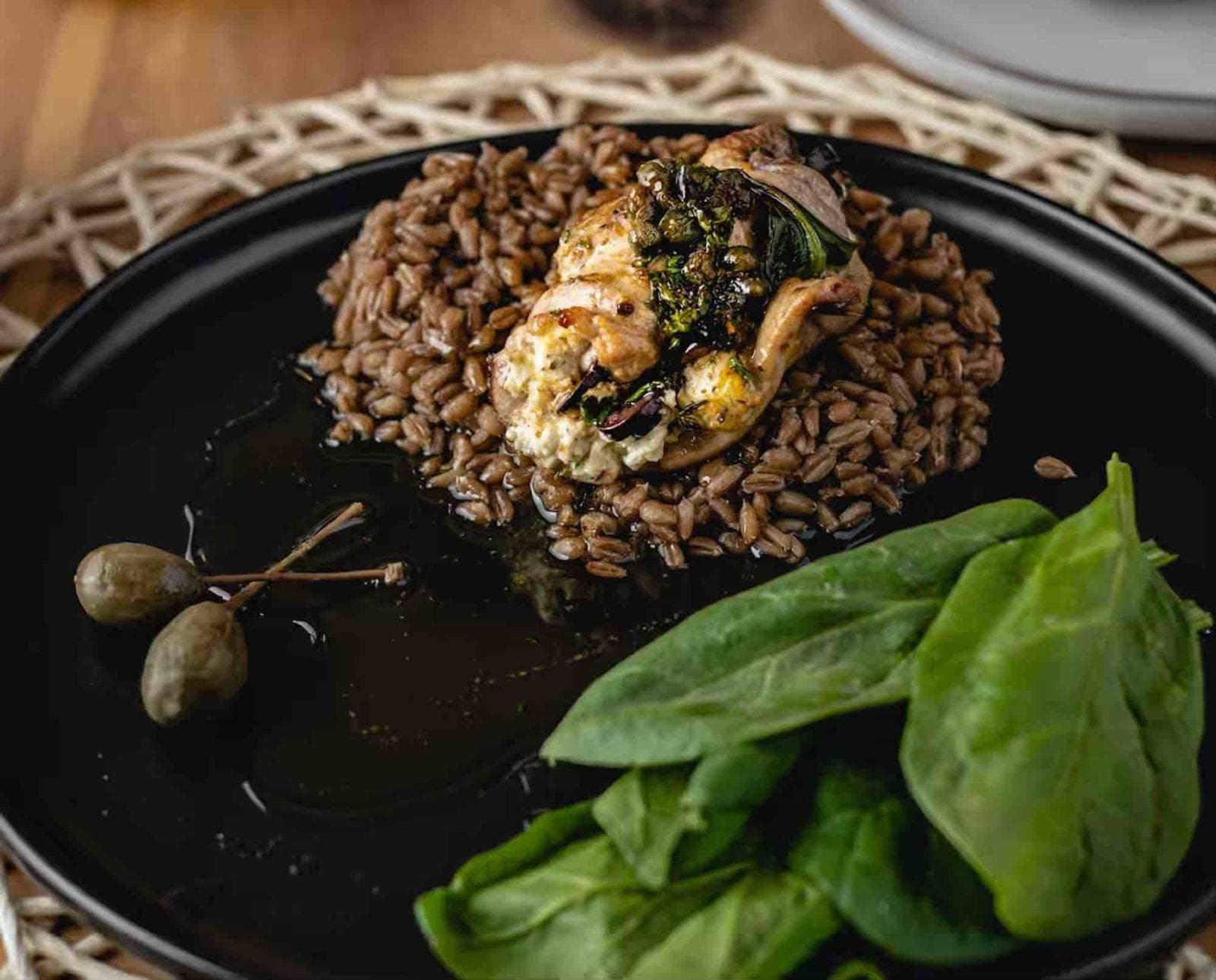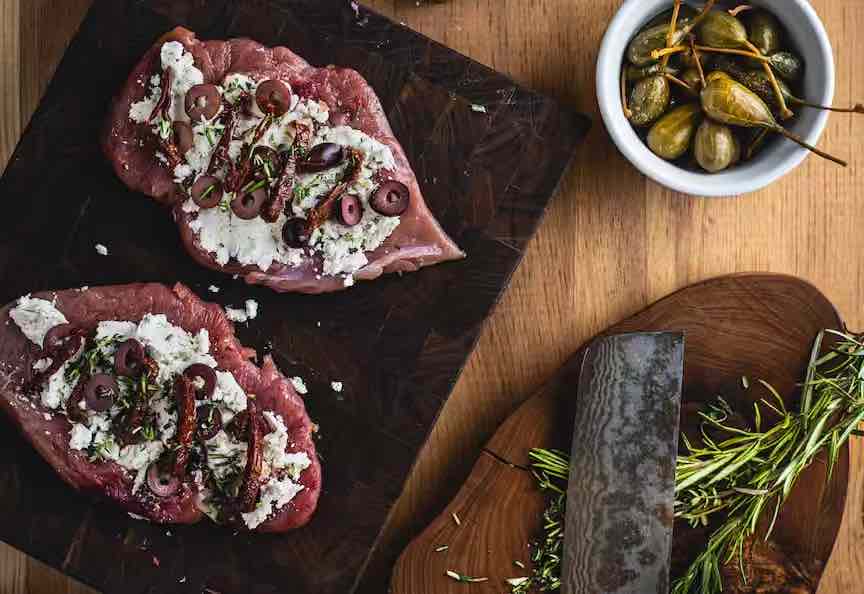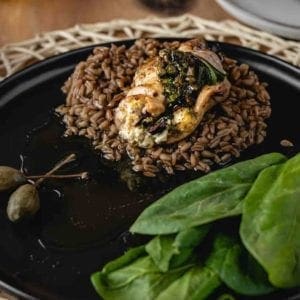Home » Small Game Cooking » Mediterranean Rouladen with Grouse or Pheasant
Mediterranean Rouladen with Grouse or Pheasant

Simon Tiedge was born and raised in a small town…
Enjoy this lighter twist on a traditional German dish using upland bird meat and Mediterranean flavors
I was recently inspired to put a spin on a dish that I grew up with. To me, rouladen are a taste of home–my original home, that is. They are a very traditional dish in Germany and were originally made of venison. Today, rouladen are made of thinly sliced beef and filled with mustard, bacon, and pickles. They are savory, smothered in rich gravy, and a great dish for the colder times of the year. Since it is quickly warming up here in Minnesota, I decided to take the concept of rouladen and apply it to a lighter, more spring-like dish. In this version I am using pheasant breasts, but you could also use turkey, grouse, or anything along those lines.
The idea is to get the meat thin and tender, about a quarter-inch thick. I use a hammer-style tenderizer for this. I place the meat between two layers of plastic wrap to protect it. Just be careful with the tenderizer and ensure you do not rip a hole in the meat.

For the filling, I went on an imaginary trip around the Mediterranean Sea to lighten up this traditionally heavy dish. The base is goat cheese, followed by sun-dried tomatoes, olives, and fresh herbs. All of that gets rolled up and secured with a couple of toothpicks or steel skewers solely made for that purpose, called rouladennadeln. This just shows how dedicated Germans are to their food and traditions. To add to the great flavor, I decided on a simple lemon and caper butter sauce.
I served this dish with a grain mix and a steamed artichoke, but you can use anything from potatoes to rice or couscous. Also, some good bread on the side is a must since you can soak up the leftover sauce with it!

Mediterranean Rouladen with Grouse or Pheasant
Ingredients
For the Rouladen
- 4 pheasant or grouse breasts or 1 turkey breast
- 4 oz goat cheese (I like the package with herbs)
- 10 10 olives, sliced thin
- 4 sun-dried tomatoes, sliced
- 1 tbsp fresh thyme, chopped
- 1 tbsp fresh rosemary, chopped
- Toothpicks or string to secure the rolls
- 2 tbsp unsalted butter
- Fresh ground pepper
- Fat or oil for pan frying
For the Sauce
- 6 tbsp unsalted butter
- 1 clove garlic
- 3 tbsp lemon juice
- 2 tsp lemon zest
- Capers to taste, approximately half a 3.5 oz jar
- 2 tsp parsley, chopped
Instructions
Making the Rouladen
- Preheat oven to 400 degrees Fahrenheit.
- Take the goat cheese out of the fridge to bring to room temperature.
- Put breast meat (one at a time) in between two sheets of clear plastic wrap. Use a meat tenderizer to carefully flatten them to about 1/4-inch thickness.
- Spread the goat cheese on one side of each breast. Top with sliced olives, sun-dried tomatoes, and herbs.
- Crack some fresh pepper over them and roll them up tightly, so that the filling is on the inside. Secure the rolls with toothpicks or string.
- Brown all sides of the rouladen in a skillet over medium-high heat. Remove from the pan and set into an oven-safe dish. Top each of the rolls with a small dab of butter and bake in the oven for about 15 minutes or until the internal temperature reads about 155 F.
- In the meantime, prepare the sauce.
Preparing the Sauce
- Rinse the capers.
- Melt the butter in a skillet over low heat. Add capers, lemon zest, and garlic and sauté until fragrant (about 30 seconds). Add lemon juice and bring to a simmer.
- Turn off the heat once the sauce simmers and add the chopped parsley.
- Drizzle sauce over the rouladen and enjoy with a fresh vegetable of your choice.
Nutrition
Simon Tiedge was born and raised in a small town in Germany, where hunting access is limited, but wild game can be bought in stores and enjoyed in restaurants. Preparing food has been a passion of his for a long time, and only grew more important to him when he moved to Minneapolis, Minnesota in 2011. He began searching for ingredients and foods that he had grown up with in Germany and had enjoyed during his travels abroad. When he couldn’t find some things he took matters into his own hands and started baking bread and making cheese, but still the wild game he loved had eluded him. In 2019, with his new hunting dog Shooter out front, he closed the circle to supply his own meat by hunting the public lands of the USA. Today Simon lives in a small town in Minnesota with his wife and 2 dogs and creates wild game meals out of all the memories that fill his freezer.



